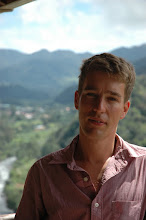Life On The Nile
Strangely, Egypt was never one of the anticipated highlights of this trip for me. The pharaohs had always left me a little cold and if anything it was the opportunity to explore the Islamic sites of Cairo that whet my appetite. After the Mongols sacked Baghdad in the thirteenth century, Cairo rose to prominence as the greatest city of the Islamic World, and even today is the largest city in the Middle East with over 16 million inhabitants.
All that rather changed for me when I took a flight earlier today down to Abu Simbel, the gigantic temple of the Pharaoh Ramesses II which was moved block by block in the 1960s to a new and higher site when the upper Nile valley was flooded to create the enormous Lake Nasser behind the Aswan Dam. It is the most breathtaking place. You are greeted by four monumental statues of Ramesses seated either side of the entrance portal, which you pass through to walk inside the mountain and explore the fabulously carved interior, replete with images of the Pharaoh fighting the Hittites from the back of a chariot, or making offerings to the falcon god Hora and all manner of other ancient Egyptian deities. Somehow, seeing this grand temple complex so perfectly preserved after 3500 years has unlocked a greater appreciation for all the other relics and monuments I have seen scattered higgledy-piggledy throughout the Egyptian Museum in Cairo, including the grisly remains of Ramesses himself, staring up at you from his partially unwrapped mummy.
This temple impressed me more than the sight of the Great Pyramids, where you are hassled to death by the most persistent local salesmen trying to bully you into buying their overpriced souvenir shite or clamber onto the back of a knackered looking camel. It's also a bit of a shock to see just how close Cairo is to the pyramids, literally just below them, though it doesn't seem to make it onto many of the classic postcard shots. Still, there is something to say for visiting a place that even the ancients regarded as one of the wonders of the world.
An overnight train journey following the verdant green strip that is the course of the Nile has taken us to Aswan, a lovely riverside town with great souks and picturesque scenes of felucca sailboats on the river. Tomorrow we commence a three day journey by felucca to Luxor, sleeping on deck, crapping over the side, and stopping off at ancient ruins along the way. I've even bought a local Nubian ankle length chemise and headscarf to wear on the boat. It might come in handy for covering my modesty when the urge to poo comes upon me. Otherwise, it could just make me look like a bit of a tit.

